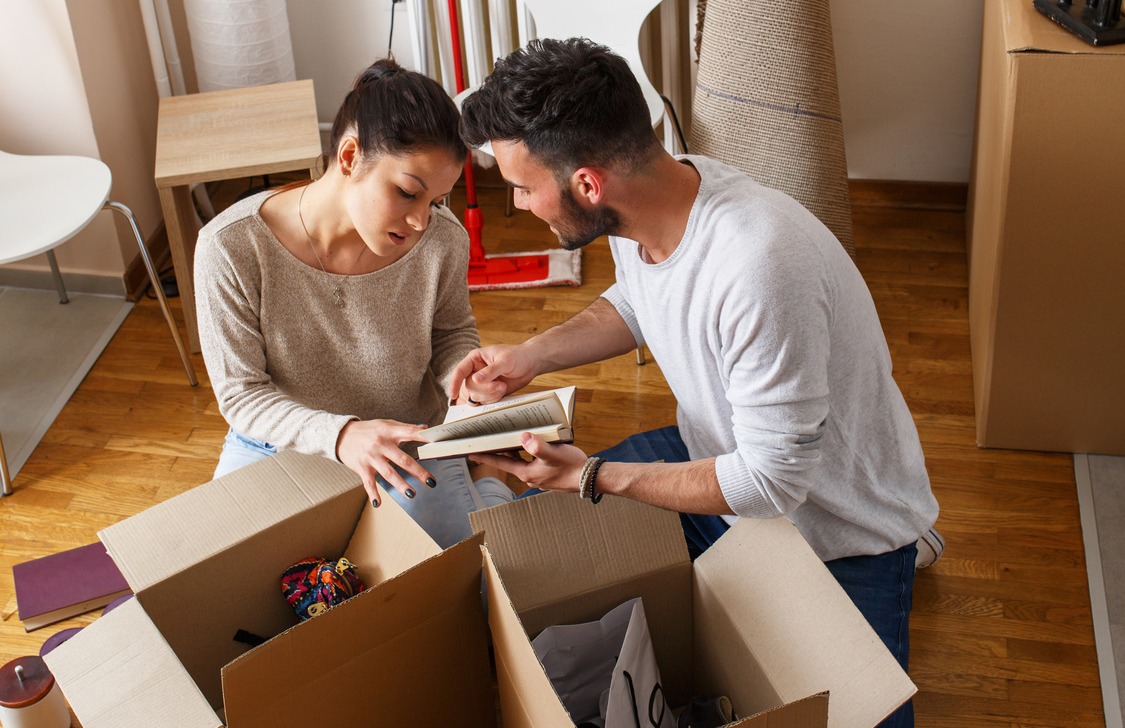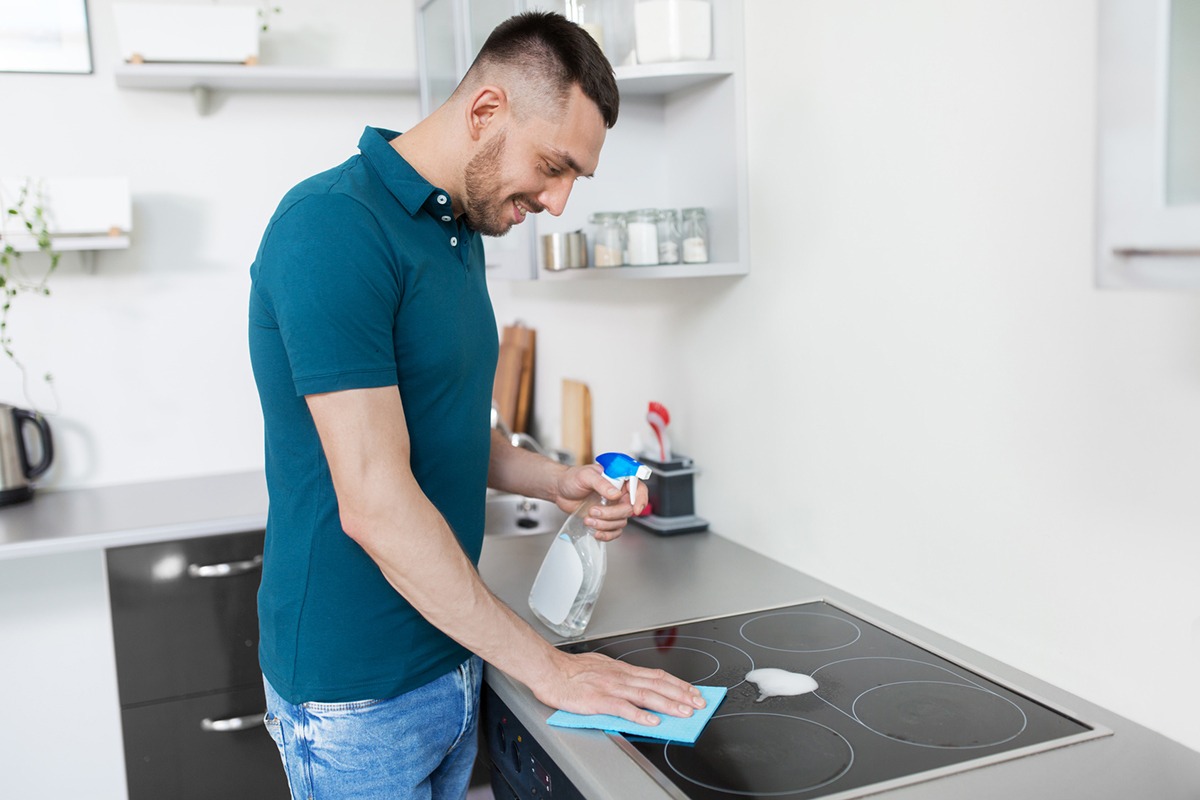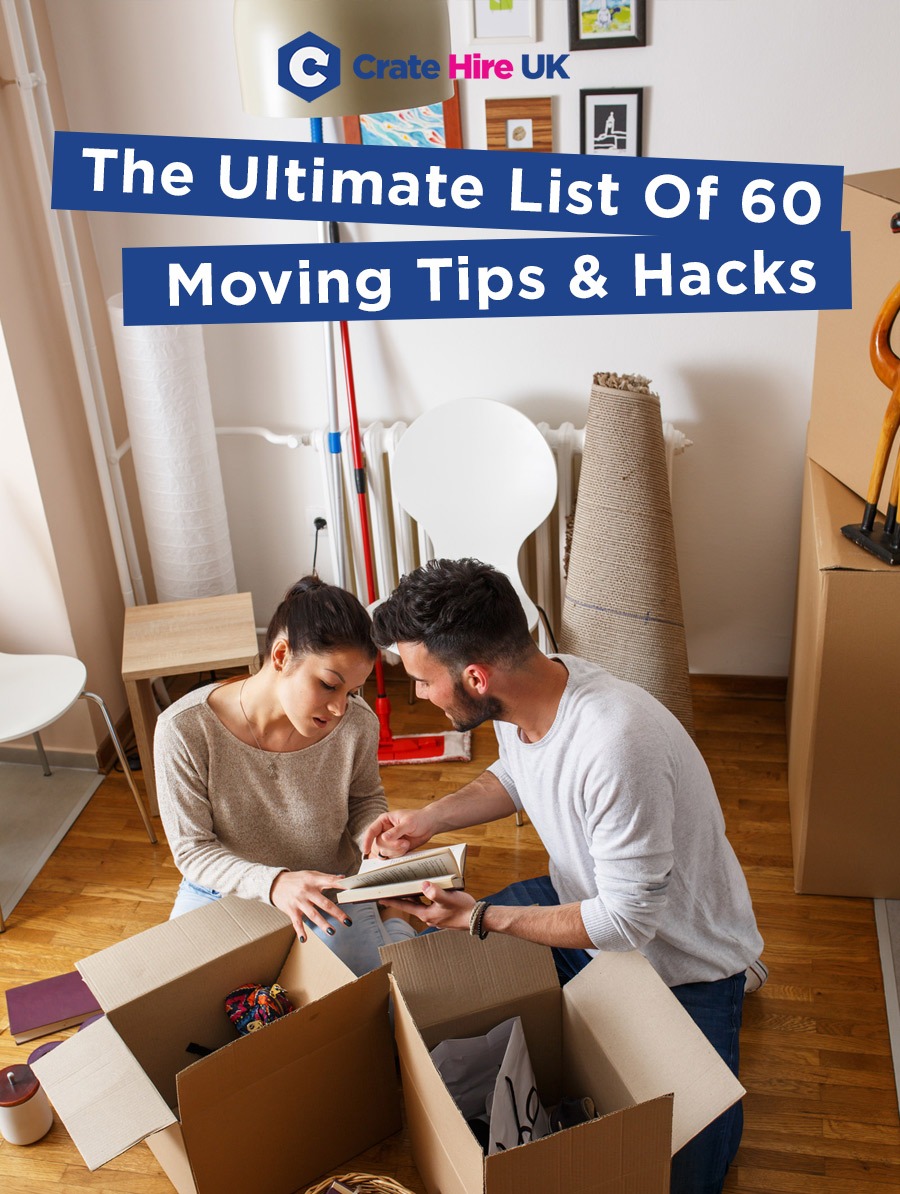We’ve been hiring crates, moving equipment and packaging for more than 20 years now, and over this time we’ve helped thousands of people to move home and office. With the wealth of experience we’ve built up, we wanted to share it with you, by putting together the ultimate list of moving tips along with a few clever moving hacks. Read on for our top moving tips.

Before Your Move
1. Reduce Volume Before You Move
Have a thorough declutter of your home before you move to cut down on the volume of belongings you’ll need to move.
2. Get Rid Of Unwanted Items
Donate or sell furniture and other household items you no longer want or need ahead of your move. Donate them to charity, pop them on Freecycle or turn to your local Facebook selling group.
3. Hire Your Removal Company As Soon As Possible
Make sure you hire a removals service as soon as you have a completion date, especially if you are moving in the busy summer months.
4. Arrange Crate Hire & Packaging In Advance
If you’re moving yourself, ensure you hire crates or buy moving boxes well ahead of your moving date; this will allow you to start the difficult process of packing well ahead of your moving date.
5. Use A Local Mover
If you only have an apartment or small house to move, consider using a local “man with a van” type of service which may be cheaper than a big removals company, and less hassle than hiring a van and trying to do it all yourself.
6. Ask For Help
Consider making moving day a bit less hectic by asking friends or family to help out.
7. Combat Moving Stress
Don’t forget to take a moment to breathe – moving is stressful, and the day itself isn’t just busy but can be laced with anxiety too. If you feel your stress spiralling, stop and do some simple breathing exercises to help calm and re-centre yourself.
8. Sort Out Utilities & Services
Transfer all of your utilities before moving day and ensure you’ve arranged for new services like broadband to be installed/connected at the new address on the right day, a day or two after moving day will give you some breathing space. You can notify utility and business services using SlothMove, a clever website that helps you to update your address quickly and easily.
9. Start Packing As Soon As You Can
Start packing well in advance, but make sure you start by packing things you won’t need in the days and weeks running up to moving day. Start with storage areas like the shed and attic, and seasonal clothing is also easy to get packed well ahead of your moving date.
10. Label Every Box You Pack
Make sure you label every box you pack so you can easily identify what’s inside, either a sharpie on cardboard boxes or use sticky labels if you’re moving using plastic crates.
11. Make An Inventory
If you can, log any essential items you’ve packed on a notepad, so you’ll know exactly what box you’ve packed particular items in so you’ll know where to find them should you need them.

12. Pack Smartly To Maximise Space & Avoid Damage
Pack heavier items at the bottom of boxes or crates with lighter items on top to help ensure lighter; delicate items don’t get damaged.
13. Use Plenty Of Protective Packaging
Don’t scrimp on the packaging. When it comes to protecting glassware and delicate ornaments, make sure you’re generous with the bubble wrap to avoid any common moving day mishaps like breakages.
14. Store Wine Glasses Upside Down
Ensure wine glasses are packed rim down, instead of upright and ensure spaces between glasses are filled with packaging materials – this will help to minimise the risk of breakages.
15. Keep Anything Important Close To You
Even if you’re using a professional removals company, you might still have some personal effects that mean the world to you that you may not want to trust in the hands of anyone else. Loses and breakages sadly can occur, so to put your mind at ease, you might want to transport items of sentimental value yourself for total peace of mind.
16. Use Towels, Bedding & Undies As Packaging
Consider using bed linen, towels and underwear inside your boxes or crates to help protect fragile items that you pack. Balled up socks and bath towels, for example, are great at cushioning valuables, but the downside is that you’ll end up with towels, bedding, random underwear and clothing to sort out when it comes to unpacking.
17. Let Crate Handling Equipment Take The Strain
If you’re moving yourself, don’t forget to use crate handling equipment that will make the task easier. You can hire things like trolleys and skates that will help you shift heavier crates and boxes with ease.
18. Pack Efficiently
Pack boxes efficiently making use of as much space as possible and make sure you fill any gaps with either smaller items or packaging materials like bubble wrap or scrunched up newspaper to ensure the contents don’t rattle around inside the box.
19. Don’t Be Tempted To Over Pack Boxes
Don’t over pack boxes and pay attention to the weight of each box as you’re packing it. UK health and safety guidelines suggest carrying no more than 25kg for an individual. So while heavy items like books can be packed efficiently due to their uniform shape and size making it tempting to pack entire boxes that way, you’ll find the box may well be too heavy to lift with ease.
Also consider that if you’re using cardboard boxes, you might find they simply aren’t strong enough to pack full of heavy items.

20. Pack Clothes In Bin Bags, Still On Their Hangers
While your clothes are still hanging in wardrobes, divide into clusters, and still on their hangers, you can put them inside a bin bag which can then be tied around the top of each bundle of clothing to make unpacking quicker and easier.
21. Use Suitcases To Store Clothes
Utilise any existing suitcases you already have by using them to pack clothes into them.
22. Use Sandwich Bags For Screws
When you’re taking furniture apart ready to move, pop all screws and removable fittings inside a small sandwich bag. Use a marker pen to write what item of furniture the screws belong too. You can then either tape the bag to the item of furniture or pop in a separate box that you’ve designated for hardware.
23. Vacuum Pack Larger Soft Items
Consider using space-saving vacuum bags to package larger bulky items like bedding, pillows and duvets.
24. Clever Kitchen Packing
When packing kitchen equipment stack pots inside each other, and in the smallest, utilise the internal space by putting condiments or other small kitchen items inside.
25. Photograph Cables
Take a photo of the back of your TV, PC etc. so you’ll know exactly where the cables need to go, making getting everything set-up in your new home that bit easier.
26. Be Nice To The Removals Team
Don’t let stress make you snappy, especially if you’ve hired in help on moving day. If you deal with the removals team in a friendly way and keep them in brews, they’re more likely to do a good job for you.
27. Plan Ahead For Your First Evening Meal In Your New Home
On moving day you’re likely to be shattered, so doing a grocery shop is probably the last thing you’ll want to do. Make something in advance to take with you like a curry, slow-cooked pulled pork or a casserole that you can freeze in advance of your move, or failing that, jump onto JustEat for a well-deserved takeaway!
28. Set Up Post Forwarding With Royal Mail
Make sure you remember to forward your post to your new address – this gives you a bit of breathing space once you’ve moved in and means you can take your time notifying service providers of your new address.
29. Get Child & Pet Care Sorted In Advance
Arrange pet and child care as far in advance as possible, if you’re moving in the summer months, catteries and kennels will often be full and will require plenty of notice.
30. Use Up Food In Your Kitchen
Spend the days before you move running down the contents of your kitchen, from tins in the cupboards to fresh food in the fridge and frozen food in the freezer. It’s a good idea to run it down so you’ve got less to move which saves both time and money as you won’t need as many boxes or crates.
31. Pack An Overnight Bag
With so much going on and all the big things to remember taking precedence, it’s easy to forget that when you move you’ll need a change of clothing, something to wear in bed and toiletries close to hand, so pack an overnight bag, similar to what you’d pack if you were staying at a hotel overnight.

32. Clean Everything
Have a thorough clean so that you leave key areas like the kitchen and bathrooms in decent shape either for the landlord or new owners – no one wants to move home and find the first thing they have to do before they can even unpack is to clean the house!
33. Put A Cleaning Box Together
With point 32 above in mind, as well as your moving day essentials box, make sure you’ve got a cleaning box close to hand. If you’re moving into a new build, of course, the new house will be pristine, so this doesn’t apply, but you never really know what condition the owners will leave their house in for you, so be prepared!
34. Make A Full Inventory Of Everything You’re Moving
If you’re using a removals company you may want to make a full inventory of your possessions – this is a difficult task, but it’s worth it should a box or valuable item go missing in transit.
35. Order New Appliances & Furniture But Make Sure They’ll Fit
Ensure you order any new appliances or furniture that you might need in your new home, and make sure they will fit too! Make sure you obtain a floor plan for the property you’re moving into, which will help you work out what will fit where.
36. Book Time Off Work
Make sure you’ve booked sufficient time off work so that you don’t overstretch yourself. Spending a full weekend moving and unpacking and returning straight to work on Monday can be exhausting, so If you can, book a day or two off either side of your move.
37. Don’t Forget The Shed & Attic!
It’s natural to focus on the big things inside your home, and it’s all too easy to forget what’s hidden away inside the depths of your shed or stored away up in the attic, so make sure you clear the attic and any outdoor storage well in advance of your move.
38. Defrost Your Freezer & Turn Off Appliances
A day or two before you move, defrost the freezer, turn off the fridge and disconnect any other appliances you might be taking with you like washing machines and dishwashers.
39. Secure Drawers For Easier Moving
When moving drawers, a luggage strap, ratchet strap or even cling film can be utilised to keep drawers closed and stop them opening or falling out when being carried.
40. Use Egg Boxes To Store/Move Necklaces
Egg boxes are a great way to transport jewellery, particularly necklaces as they can be placed one by one inside each egg-shaped chamber with a little tissue paper scrunched on top to stop necklaces becoming tangled up.
Moving Day
41. Get Those Muscles Moving
It might sound daft, but make sure you warm up before you start attempting to shift heavy furniture and boxes around! A warm-up will help reduce your chances of pulling muscles when you’re lifting and carrying.
42. Pack A Moving Day Essentials Box
Make sure you’ve packed a moving day essentials box so everything you need and want will be easy to find on the day.
43. Check For Signs Of Damage
When moving furniture into your new home, check for any signs of damage there and then so you can bring it up on the day with the removals team.
44. Get Snacks In For Helpers
If you have help, either professional movers or friends and family, then you’re going to want to make sure they are well hydrated and not hungry too! Offering a brew and a few biscuits around periodically keeps everyone happier.
45. Have A Final Walk Around
Before you leave your old property for the last time, have a final walk around; check inside fitted cupboards, drawers, attics and sheds to ensure you’ve taken everything with you.
46. Stay Hydrated
Keep hydrated and well-fed. You’ll be working hard and moving day is likely to be long and tiring so ensure you don’t forget to eat and drink with everything else what’s going on!
47. Lock Up
Check all windows and doors are closed, collect keys together for the landlord or new owners and lock up securely, particularly if the house is going to be vacant for a day or two following your move.
48. Take Meter Readings
Take final meter readings in your home and make a note of them, do the same when you arrive at the new property too.
49. Store Cables This Way To Avoid Tangles
Take the time to de-tangle and properly store cables before you move. Fold them neatly and use an elastic band, a small piece of rope or a velcro fastener to hold each cable instead of shoving them all into a box which will lead to them getting tangled; it will make getting the cables out and plugging them in again much easier.
50. Use A Portable Cooler Or Cold Box
Don’t forget that your fridge is likely to need to settle before you turn it on and can use it, so packing a portable icebox or cooler with drinks and milk, especially for summer moves, can make good sense.

51. Take Photos!
Take photos of your home as you leave it for the last time, in a few years time when you’re feeling nostalgic you might want to remember the day you moved and have a few snaps to look back on.
After Your Move
53. Unpack Methodically
Unpack room by room, box by box. Taking a haphazard approach to unpacking will mean you’ll end up not knowing what’s what, so a more methodical approach makes sense. Often the kitchen is a priority, so do it in an order that makes sense to you, but don’t leave boxes half packed – make sure you empty each box before moving onto the next.
54. Say Hi To Your New Neighbours
Make an effort to introduce yourself to your new neighbours who are likely to be curious about the new arrival on their street!
53. Provide Your New Address
Make sure you’ve given everyone you need to your new address.
55. Register For Local Services
Register with a new GP and dentist in the area you now live. Find out how to change your GP.
56. Get To Know The Area
Get to know the new area by taking a walk around it and make a note of local services, shops and green spaces near your new home.
57. Store Cardboard Boxes Flat
Finish unpacking and then flatten to store cardboard boxes in the attic or sell them online in a local selling group or somewhere like eBay.
58. Set Priorities
Unless you’re moving into a new build or newly refurbished property, now you’re in there’s likely to be a long list of changes you want to make. From simple changes like the odd lick of paint here and there to refurbishing the kitchen or bathroom. Make a list of jobs you need to do and order them by priority level and don’t forget to factor in practical elements like cost and the manpower needed to complete each task.
59. Settle In
Do a big grocery shop so you can replenish your fridge and freezer contents.
60. Enjoy Your New Home
Sit back and relax (finally!)



